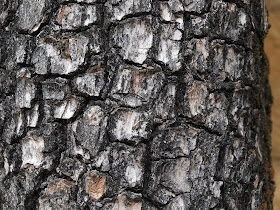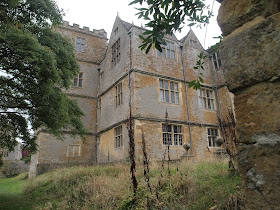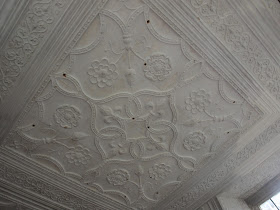A record of wildlife in my garden and various trips to the Warwickshire countryside and occasionally further afield.
Sunday, 30 October 2016
Chastleton House and Garden
Last Thursday B and I visited Chastleton House, a Jacobean manor house, and garden in Oxfordshire - a National Trust property we haven't been to before.
Walter Jones had the house built between 1607 and 1612. For various reasons the family struggled to repair the property over the centuries but his descendants lived there until 1991 when the urgent need for repairs led to the house being sold to the National Heritage Memorial Fund who passed it onto the National Trust for management. The National Trust decided to preserve the house rather than restore and it took six years for the house to be made structurally sound.
You walk down to the house from the car park along a path at the side of a sheep field with glorious views of the Oxfordshire countryside.
The dovecote dates from 1762.
I found the approach and entrance to the house delightfully spooky - very apt with Halloween fast approaching!
St Mary's Church
The house was just about to open and there were queues to get in (I had forgotten it was half term!) so we ate the sandwiches we had brought with us in the courtyard and had a look at the guidebook.
We watched a short introductory film on the property and discovered that Chastleton House was used as the location for Wolf Hall and Putney in the 2015 BBC TV adaptation of Hilary Mantel's book "Wolf Hall" which follows the rise of Thomas Cromwell in the Tudor Court from his lowly beginnings as a blacksmith's son. A cast of 125 actors and a crew of 75 were involved in the filming. Other NT properties used were Montacute House and Barrington Court (Somerset) and Lacock Abbey and Great Chalfield Manor (Wiltshire).
The inevitable Ivy-leaved Toadflax growing up a wall
and a mosaic of tree bark.
The house still looked busy so we had a quick look round the garden first. Seventeenth century walls divided the garden into a series of "rooms". The layout is Jacobean and is a rare survival from an era when gardens were created to show man's mastery over nature! Today the National Trust are in the process of restoring the garden.
Looking towards the croquet lawn with the Wilderness behind. Walter Jones-Whitmore in the Nineteenth Century became known as the "Father of Croquet" and he created the game on the lawns of Chastleton House. He won the first national croquet championships. He was also well known for other inventions - a "clockwork bootlace winder" and an "explosive bell pull" system on trains which stopped them in an emergency.
The Kitchen Garden
The Best Garden - a Jacobean Pleasure Garden consisting of yew and box topiary.
And onwards into the house. You can visit a lot of rooms - parlours, lobby, bedrooms, the Great Chamber, library, museum room, the Long Gallery and the old kitchen but it was very dark in many of the rooms (probably the darkest of any NT property I have visited). No wonder they filmed Wolf Hall here as I seem to remember quite a few of the scenes in the series were very poorly lit! Consequently I couldn't get many photos and the one's I did take were poor - oh, to have a camera that performs well in low light!
Entering the house
19th century stained glass windows in the Great Parlour depicting Charles I and Henrietta Maria
Dining Table (blurred!)
The Fettiplace Room - the tapestry to the left is 17th century and shows the Story of Jacob - the bedcovers date from 1720 -1730
Lovely wooden carvings on the bed in The Cavalier Room. Following the Battle of Worcester in 1651, the owner of Chastleton House (Arthur Jones - "the Cavalier" and supporter of Charles II) fled the battlefield and was hiding in a closet adjoining this room when a group of Parliamentary soldiers arrived at the house demanding a room for the night. Arthur's wife, Sarah, gave Cromwell's soldiers a flagon of ale to which she had added laudanum allowing her husband to escape while the soldiers slept.
The Long Gallery (which is superb) runs the whole length of the North front (a distance of 22 metres) and is the longest surviving barrel-vaulted ceiling of its date in England. This type of room was a status symbol and was used to display ancestral portraits, for the occasional indoor stroll when weather was inclement and in the 19th century badminton was played here. The plaster work was restored 1904/5.
At the West end of the Long Gallery the spandrels have unique painted masks in a Japanese style. The design is so unusual that it is believed they were part of the original scheme and thus very rare. Due to their location either side of the window it is thought they are a type of apotropaic mask (a modified Green Man) placed there to stop evil spirits entering the house. Matching masks may once have also been placed at the East end windows.
We paid a brief visit to the Church before leaving to search for the Four Shire Stone but I will leave that for another post.

















































